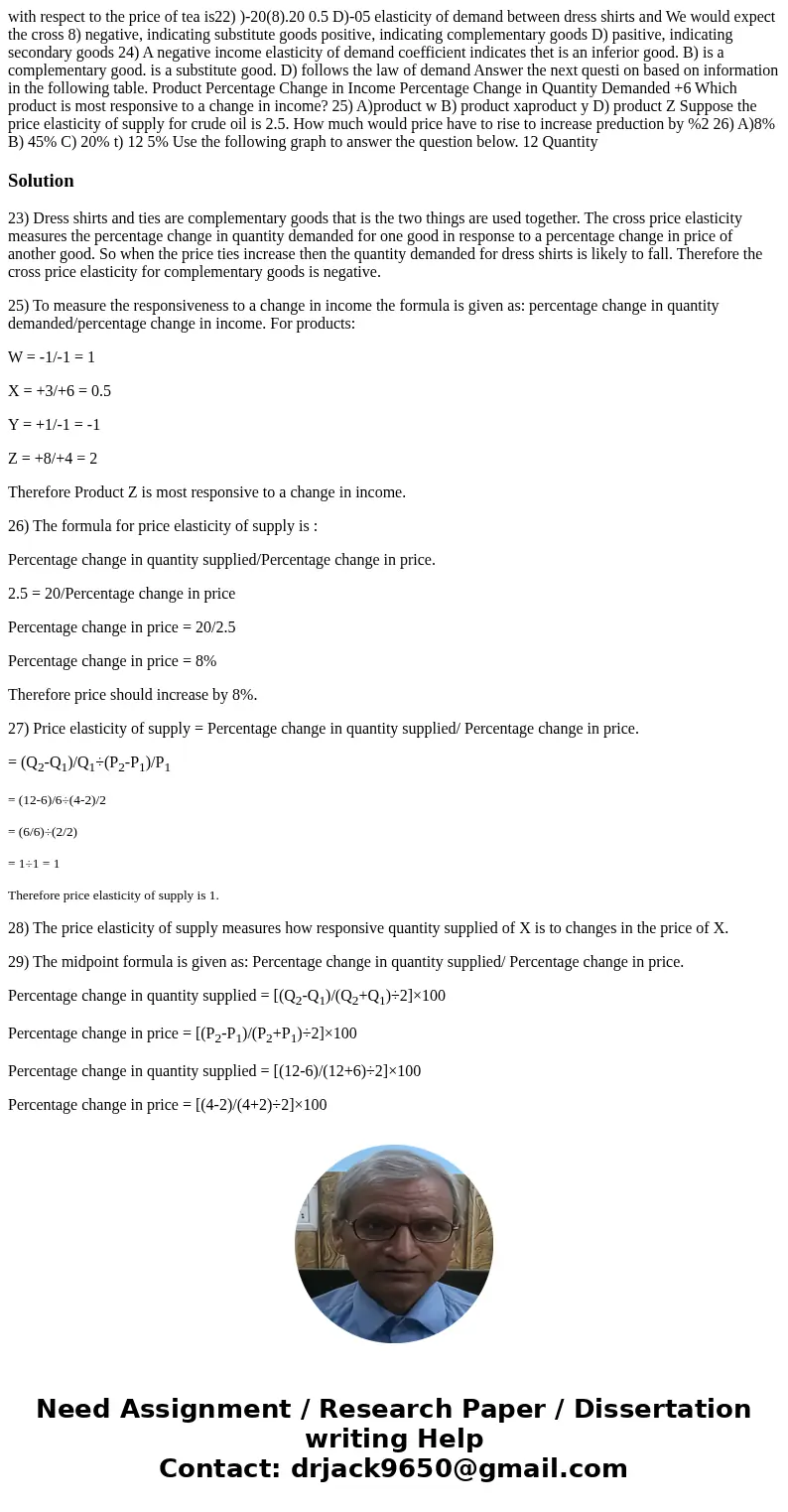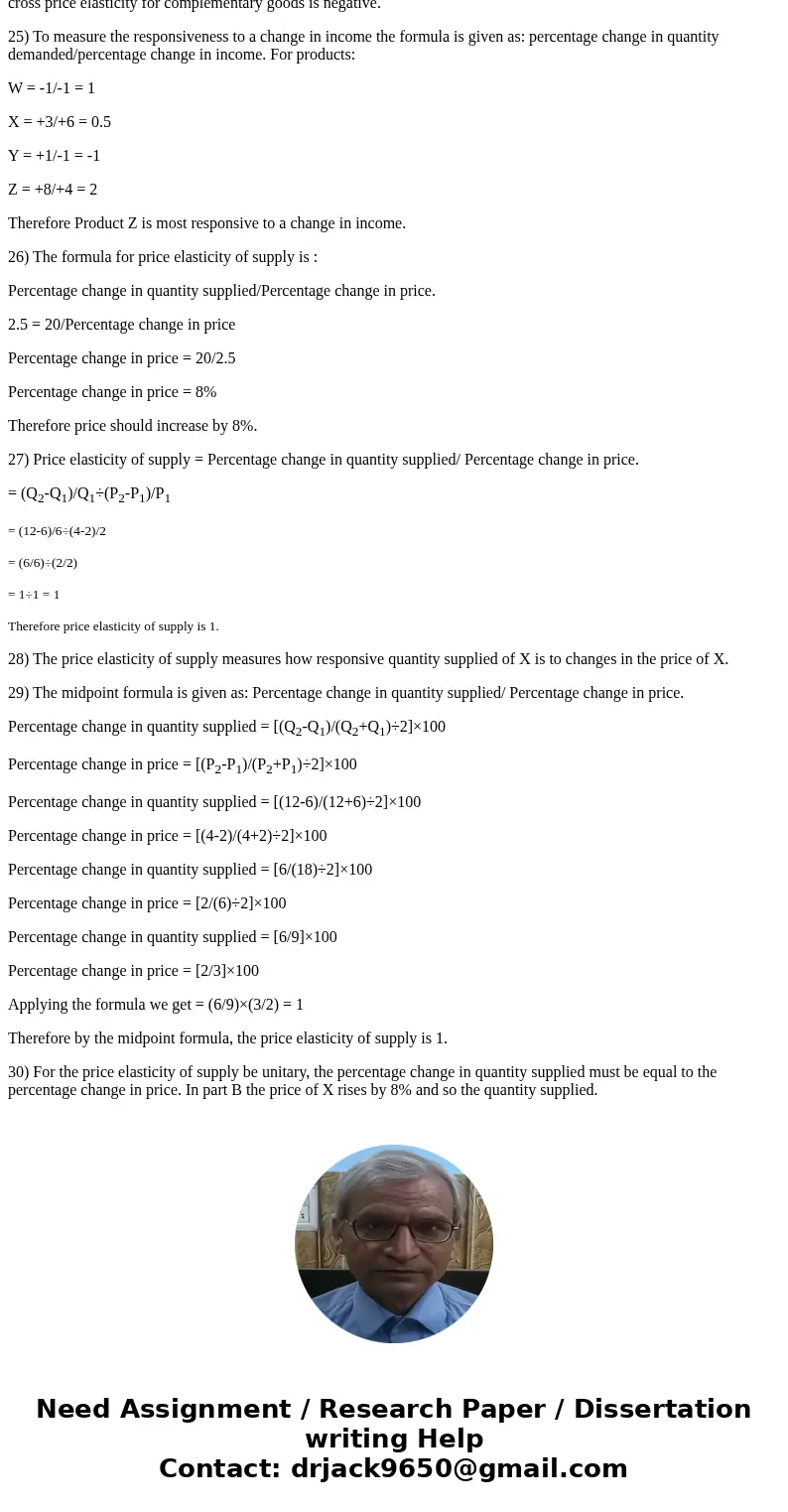with respect to the price of tea is22 20820 05 D05 elasticit
Solution
23) Dress shirts and ties are complementary goods that is the two things are used together. The cross price elasticity measures the percentage change in quantity demanded for one good in response to a percentage change in price of another good. So when the price ties increase then the quantity demanded for dress shirts is likely to fall. Therefore the cross price elasticity for complementary goods is negative.
25) To measure the responsiveness to a change in income the formula is given as: percentage change in quantity demanded/percentage change in income. For products:
W = -1/-1 = 1
X = +3/+6 = 0.5
Y = +1/-1 = -1
Z = +8/+4 = 2
Therefore Product Z is most responsive to a change in income.
26) The formula for price elasticity of supply is :
Percentage change in quantity supplied/Percentage change in price.
2.5 = 20/Percentage change in price
Percentage change in price = 20/2.5
Percentage change in price = 8%
Therefore price should increase by 8%.
27) Price elasticity of supply = Percentage change in quantity supplied/ Percentage change in price.
= (Q2-Q1)/Q1÷(P2-P1)/P1
= (12-6)/6÷(4-2)/2
= (6/6)÷(2/2)
= 1÷1 = 1
Therefore price elasticity of supply is 1.
28) The price elasticity of supply measures how responsive quantity supplied of X is to changes in the price of X.
29) The midpoint formula is given as: Percentage change in quantity supplied/ Percentage change in price.
Percentage change in quantity supplied = [(Q2-Q1)/(Q2+Q1)÷2]×100
Percentage change in price = [(P2-P1)/(P2+P1)÷2]×100
Percentage change in quantity supplied = [(12-6)/(12+6)÷2]×100
Percentage change in price = [(4-2)/(4+2)÷2]×100
Percentage change in quantity supplied = [6/(18)÷2]×100
Percentage change in price = [2/(6)÷2]×100
Percentage change in quantity supplied = [6/9]×100
Percentage change in price = [2/3]×100
Applying the formula we get = (6/9)×(3/2) = 1
Therefore by the midpoint formula, the price elasticity of supply is 1.
30) For the price elasticity of supply be unitary, the percentage change in quantity supplied must be equal to the percentage change in price. In part B the price of X rises by 8% and so the quantity supplied.


 Homework Sourse
Homework Sourse